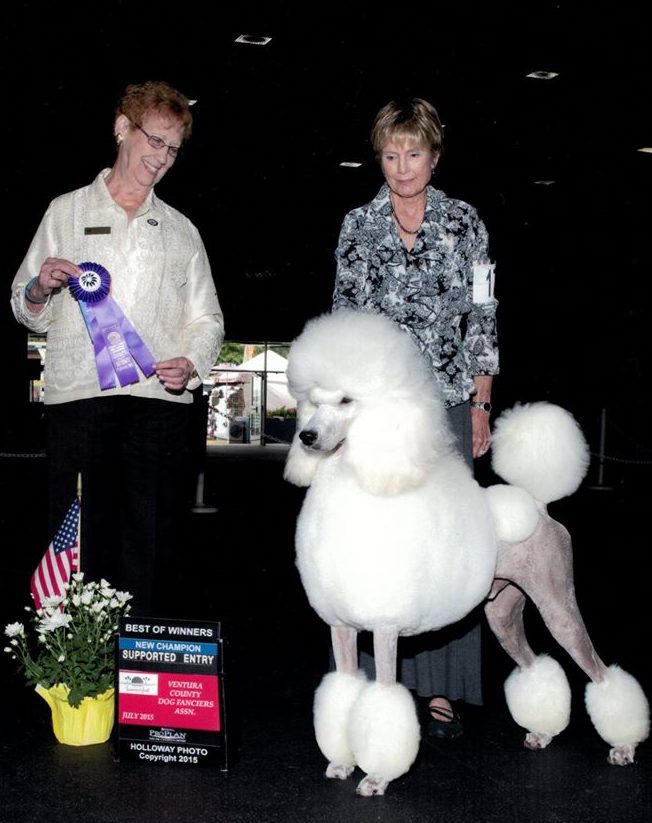
Demonstration #2 – With a Coefficient of Inbreeding that low, why is he so homozygous?
One of the wonderful things about the new DNA-based tools available to breeders is the ability to assess dogs not based on probabilities, but on actual genes. COI, the famous Coefficient of Inbreeding, was invented in 1922 by Sewall Wright, and it served dutifully for a many decades. It is a probability calculation, however, and cannot take into consideration things like selective breeding, where breeders select the puppies with traits they favor, thereby messing up the probabilities that each pup in each generation would inherit roughly a quarter of each grandparent’s genes, an eighth of each great-grandparent and so on.
In the wild, pedigree analysis like COI has also proved a bit iffy, as Scandinavian wolf populations with very few founders were somehow found to have retained far more diversity than predicted by COI. Once people started applying math to DNA identification panels, they started to develop much more complex and accurate assessment calculations.
How many times have you heard, “I outcrossed and got XYZ disease”? How many times have you heard “My dogs are linebred and perfectly healthy?” All the breeders can’t be lying. So what gives?
Here’s the problem. COI is a great predictor for large populations, but it’s awful for individuals. A very nice woman recently wanted some help understanding the results for her dog, CH Mojave Rose Summit I Put a Spell On You, a.k.a. Bodhi, co-owned and bred by Jessica Grahm. (And a thank you for letting us use your boy’s results!)
This is a beautiful white dog from impeccable white lines on the top of the pedigree and equally impeccable black lines on the bottom. His pedigree is linked to his name, and as you can see on the Poodle Health Registry database, his 10 generation COI is a pretty decently low 5.4%. His percentage of the Mid Century Bottleneck founders (or %MCB), however, is a whopping 65.7%. Based on those numbers, we’d expect him to have a very low Outlier Index (which measures how similar a dog is to its breed) and his heterozygosity (where the genes he inherited from sire and dam do not match) to be pretty high.
We’d expect that, and we’d be wrong. First, this lovely boy’s Inbreeding assessment from his individual dog profile on BetterBred.com looks like this:
His inbreeding level is very high, with an IR of 0.22, and an HL of 0.46. The breed averages of these are 0.03 and 0.31 respectively. Nearly half of the tested loci have the same alleles inherited from both sire and dam. And there was no way his dedicated breeder could have predicted this using a ten generation COI. The only thing that suggested it could be possible was that very high %MCB. Given all that, we’d expect he ought to have more high frequency alleles than the breed average, too, right?
We’d expect it, and we’d be wrong again. Here is his Alleles analysis:
Again, you can can compare to the breed average. The Outlier Index uses the alleles and their frequencies to measure how similar or different a dog is from its population – and despite the homozygosity, and 65.7%MCB, somehow this lucky boy has retained a good number of infrequent and neutral alleles compared to most Standard Poodles. Now the actual alleles themselves mean nothing specific – what matters is the ratio, because if he inherited this ratio from his parents, he probably inherited a similar ratio genome wide. We have tested disease risk based on OI, and Standard Poodles with OIs below the breed average are twice as at risk for autoimmune disease as Standard Poodles above the breed average. Standard Poodles with an OI below 0.30 have 4 times the risk of autoimmune diseases as those above 0.30 – and that same group has 6 times the risk of Sebaceous Adenitis that those with OIs above .30 – which means his low risk OI happily mitigates his higher risk IR. Moreover, a dog with that high a %MCB with that high an OI is very hard to come by.
So now we know more about this boy. Let’s look at another feature on BetterBred.com, the Genetic Relationship page for him:
At the top of this list is Stonehaus Miss Dusty Rose at Chimera, Maya, who is also very high %MCB, and she’s estimated to be a bit higher than a half sibling in terms of genetic relation to Bodhi. And when you look at their pedigrees, they have a few great grandparents in common, but they don’t look terribly related at all. They are, however, much more related than their pedigree would suggest because they inherited many of the same genes from the same great-grandparents and other distant ancestors. Pedigree analysis would say a breeding between these two would be a very loose linebreeding. In actual fact it would be inbreeding.
Farther down that list are dozens and dozens of dogs that are only slightly related or not at all related to Bodhi, many from similar lines. There are so many to choose from that will not double up on anything negative, and many dogs with very similar lovely traits that would compliment him. It is imperative to get an accurate view of your potential breedings!
In future posts, we’ll show you a few related-by-pedigree dogs that actually aren’t all that related after all…
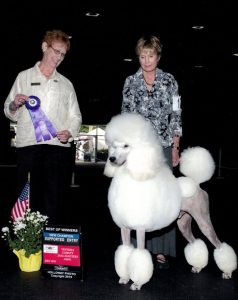


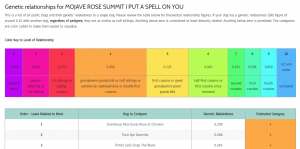
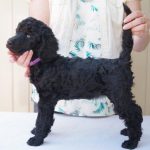 Previous Post
Previous Post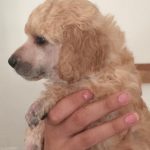 Next Post
Next Post


